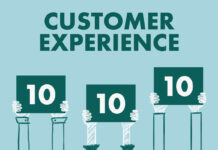Amid the pandemic’s peak, businesses grappled with supply chain hurdles and struggled to engage consumers through mobile platforms. Initially viewed as temporary, adaptations made during the crisis became permanent post-recovery.
Consumer expectations shifted towards omnichannel experiences, particularly in payments. Businesses confront the challenge of swiftly adapting to evolving market dynamics and payment preferences, underscoring the significance of rapid, efficient transactions to maintain competitive edges with trading partners.
Eileen Dignen, J.P. Morgan’s Global Head of Payments for Corporate Client Banking, stressed the benefits of collaborating with banks like J.P. Morgan. Such alliances grant access to innovative solutions and guidance, empowering businesses to refine their models while bolstering speed, accuracy, and security.
Dignen highlighted that digitalization transcends strategy, becoming a fundamental facet of business conduct. Many businesses now stand at a crossroads, deliberating their next steps amidst this rapidly evolving landscape.
Embedded payments emerge as a pivotal advancement, providing businesses with novel avenues to engage clients and consumers. These integrated payment solutions facilitate seamless transactions, amplifying customer interactions and fueling business expansion.
In conclusion, the pandemic precipitated substantial shifts in consumer behavior and business practices. As digitalization assumes paramount importance for business survival, organizations must embrace innovative payment solutions to stay competitive and satisfy evolving customer demands. Collaborating with banking partners like J.P. Morgan offers invaluable assistance in navigating this transformative journey and shaping the commerce landscape’s future.











